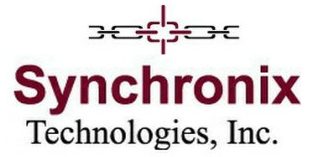Focus and Leverage for maximum impact, least effort
Since 1988 Theory of Constraints has been our chosen first-line technology for helping clients achieve massive performance improvements quickly, and to sustain them (or even improve on them) after our involvement with the project is over.
We’ve stayed with it because, quite simply, we’ve not seen anything that’s even close in effectiveness – and in the past 20 years there have been a LOT of other improvement technologies competing for a manufacturer’s attention. Most recently Lean manufacturing and Six Sigma, of course. (If you’re interested … there’s a case study of how TOC, Lean & Six Sigma work together very effectively.)
Originated by Eli Goldratt, author of the best-selling book The Goal, TOC is a remarkable technology.
There are 8 Theory of Constraints applications, plus some “Thinking Processes” that managers can use to analyze a situation, identify a core problem, and construct an effective solution.
The best known TOC application is the Production solution (aka Synchronous Manufacturing, or Drum-Buffer-Rope). This typically enables a company to improve on time delivery to th 95% to 98% range, or better; shrink lead times by 50% to 75%; ship 20% to 40% more from the same resources; along with many other benefits, in as little as 90 – 120 days.
Probably the next best known are Throughput Accounting, which provides much more useful decision-support data than Cost Accounting does, or the Distribution/Supply Chain solution, which offers the potential to shrink your or a downstream client’s inventory while improving availability of product, or Critical Chain Project Management that offers on-time completion of projects in 25% or more shorter project durations.
These have no equivalent, or no equal, in other improvement technologies.
But there’s a lot more to the TOC than just these applications.
For example the Marketing Solution and Sales Solution give many companies the ability to increase sales almost at will … even when the economy tanks. These are powerful but very little known TOC applications, and again have no equivalent in any other improvement technology. I’m not leveling a criticism of the others – this is simply a fact.
Through all the applications, the TOC principles form a common thread, characterized by focus, and leverage.
These two characteristics differentiate the Theory of Constraints from all the other improvement technologies, but also provide a platform to take the maximum advantage of Lean, Six Sigma, ERP, Total Quality Management, or whatever technology a company favors… providing the leverage point where these technologies can have their biggest impact, making them far more effective than they are stand-alone.
Here are the main links to follow if you want to learn more about Theory of Constraints:
First, a review of the 8 Theory of Constraints Applications, with links to even more detail.
Behind every TOC application there is a consistent set of principles, and at the heart of these are the 5 Focusing Steps of the TOC.
Case studies and testimonials … charts and graphs of client results, comments from clients … going back more than 15 years… and we’re just starting to document some case studies in detail.
We offer both public workshops, and company-dedicated sessions. Details of the different Workshops are here, and we also have a schedule of all public Workshops planned for 2008. You can obtain a Brochure and Registration Form online.
Then there are the TOC Thinking Processes … superb tools for analyzing a situation to get a cause-effect understanding of the core problem underlying a whole army of performance issues, and for resolving them without compromise. Most clients don’t even know these exist – they can gain tremendous benefits from the applications without any awareness of these Processes. But when they’re appropriate, they are pure gold.
The little known application of TOC … Getting a “Buy-in” of any kind, internally. This is a specific way of using the Thinking Processes, and most TOC experts use it all the time, without conscious thought, because the application is very effective. It’s the key to how our implementations encounter almost no resistance, a characteristic that most of our more traditional consulting colleagues envy.
A comparison of TOC with Lean Thinking – and how they work together
A comparison of TOC with Six Sigma – and how they work together
Or … you can return to the home page: Fast, massive performance improvement
